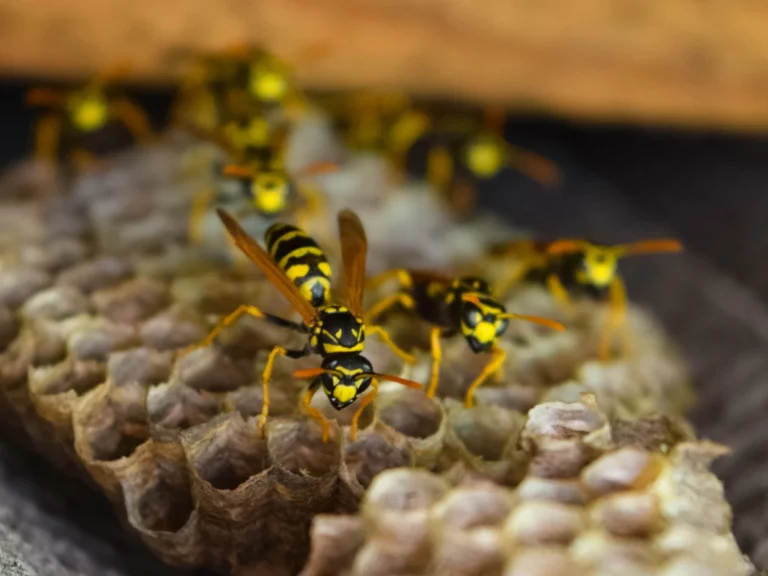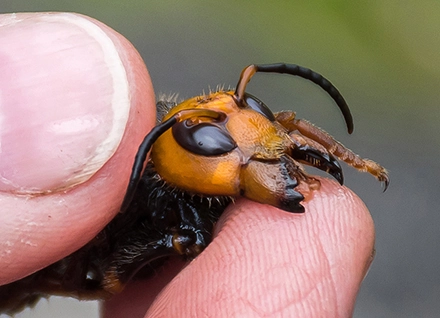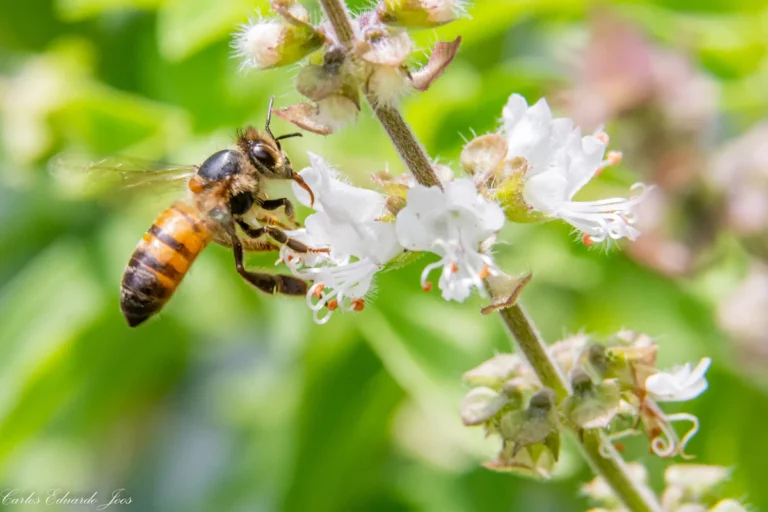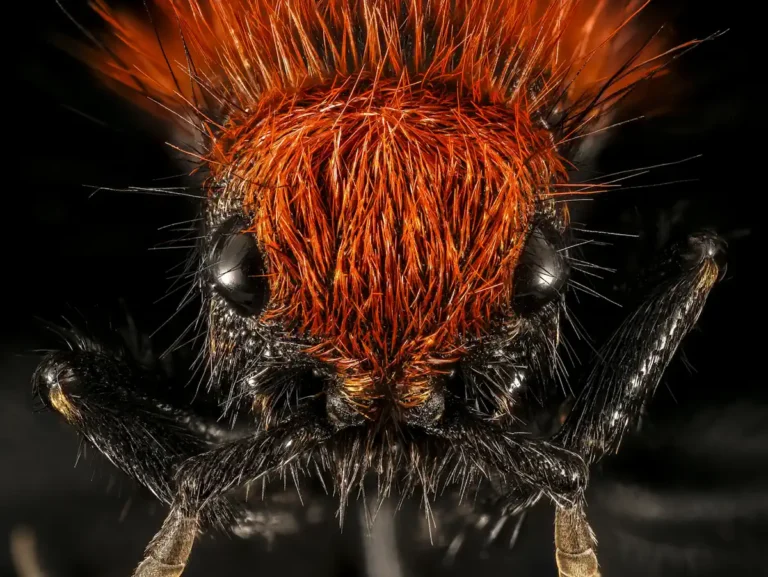Table of Contents
ToggleCarpenter bees (Xylocopa virginica) are beneficial insects but can also damage wooden structures. Female carpenter bees excavate openings in wood for the purpose of oviposition, the laying of eggs. This article outlines how to identify carpenter bees, prevent infestations, and mitigate further damage to your Cooper City home.
Best Way To Get Rid Of Carpenter Bees in Cooper City, FL
1. Use Residual Insecticide to Eliminate Carpenter Bees
To effectively manage carpenter bees, apply residual insecticides. The optimal times for application are early spring before the infestation begins or during an active outbreak. Target the areas where carpenter bees are burrowing into wood.
People usually find these holes on the underside of wooden surfaces. We recommend two applications in the spring, spaced 3-4 weeks apart, to prevent damage most effectively.
When shielded from rain, residual insecticides can last 2-3 months. Applying in late winter may provide prolonged effects through the carpenter bee season.
Severe Infestations
For more serious cases, you may need to administer treatments more frequently. We suggest a two-week interval for spray applications. After each treatment, apply an insecticidal dust to all potential nesting sites.
2. Apply Insecticidal Dust in Carpenter Bee Nests
Utilize insecticidal dusts to eliminate active infestations. Utilizing a duster, apply the insecticide dust into each carpenter bee hole you find.
At first, the wood damage may look minor with a hole only one or two inches deep. However, this hole often makes a 90-degree turn and extends further.
The female bee turns 90 degrees and creates a channel ranging from 6 inches to 4 feet in length. This channel acts as the main corridor, where she will dig smaller chambers as egg nests. She lays eggs, stocks them with food, and then seals the chamber for the eggs’ development.
3. Plug Carpenter Bee Holes
- Plug the holes after eradicating all the bees. The early fall months are a safe time for this task.
- For the sealing of entrances, one may employ materials such as plugs, cork, putty, or caulking compounds. We recommend wood putty because you can paint over it later.
- Sealing entrances prematurely may prompt the bees to chew new openings elsewhere.
- Apply insecticide to carpenter bee nests early in the season (Jan, Feb) to deter additional boring. Addressing the situation promptly can prevent future infestations.
How to Eliminate Carpenter Bees Naturally
Carpenter bees are pollinators, and you may prefer to use non-toxic and organic methods to eradicate them. Timing is critical: address the issue in late summer or early spring, when sealing their nests is most effective.
Carpenter bee traps offer a non-toxic solution. One may use a trapping device, positioned directly above the entrance used by the bees. The bees enter, mistaking the trap for a nest, and become trapped.
Non-toxic repellents include water solutions with citrus or almond oil. Apply these using a spray bottle around the bee entrances. For optimal results, use a combination of methods.
Loud noises and vibrations also deter bees. To deter the bees, utilize the emission of elevated auditory volumes near the vicinity of the infested area for 2 to 3 days. Once the bees have departed, promptly seal the holes.
Tip: Some professional exterminators may relocate the bees without causing harm, depending on nest accessibility.
Identifying Carpenter Bees
Carpenter bees resemble bumblebees—large and patterned in yellow and black. They measure about 1/2 to 1 inch and may display metallic reflections in shades like dark blue, yellow, green, or purple. In contrast to bumblebees, these insects do not possess fur on their abdominal regions.
Carpenter bees are most visible in spring, frequenting areas like eaves, porch rails, and unpainted wood. Sometimes they’ll go by the moniker “wood bees” because of their habit of boring into wood.
Signs of Carpenter Bee Infestation
Carpenter bees drill holes about 1/2 inch in diameter, primarily in unfinished wood. They are capable of tunneling into seasoned hardwoods, softwoods, and even decaying wood. The female creates channels known as galleries, where she lays her eggs and supplies them with pollen. Sealing these galleries off ensures the larvae’s development before repeating the next egg process.
To effectively prevent infestations, act early in the season.
- Finish Wood: Apply varnish or paint to unfinished wood surfaces like decks and sills to deter carpenter bees.
- Seal Openings: Before spring, seal exterior openings, including previous-season bee holes. Use Carpenter Bee Blocker Kits to seal the holes while still allowing for pesticide application.
- Use Insecticides: Apply residual insecticides to vulnerable areas in early spring or during active infestations.
- Apply Dust: Use insecticidal dust in the fall and early spring to eradicate existing bees or their eggs.
- Utilize Traps: Hang traps where you’ve noticed bee activity in the past, particularly in sunlit areas.
Pro Tip: To increase trap effectiveness, place dead carpenter bees inside.
Do Carpenter Bees Sting?
Females possess stingers but seldom use them unless provoked. Males appear more aggressive but lack stingers. To minimize the risk of stings, don’t provoke the insects and be cautious when interacting with them.
How to Prevent Carpenter Bee Infestations
Take proactive steps to avoid future carpenter bee issues.
- Early fall is optimal for prevention as galleries are likely empty. Bees will have either hatched and left or not yet returned for the winter.
- Seal all carpenter bee holes with plugs, putty, or caulk, then paint the wood for added protection.
- Cover all exterior openings with fine mesh screens or caulk to deter bee entry.
- Species of hardwood, such as oak, are generally less attractive to carpenter bees in comparison to softwood species like pine and cedar.
Why Do Carpenter Bees Drill Holes?
Adult carpenter bees emerge in spring, seeking mates. Post-mating, females excavate nests using their robust mandibles.
Initially, they drill about a half-inch deep into the wood. Then they turn and start tunneling along the wood grain. This leads to the formation of brood cells.
Males protect these nesting sites and engage in battles with rival males.
Carpenter bees are mostly just a nuisance. However, if you don’t stop their boring activities, they can cause structural damage over time.
How Carpenter Bees Damage Wood
Carpenter bees do not consume wood but excavate it to create nesting galleries. These tunnels can be extensive and may cause significant structural damage if left unattended.
Act Now to Protect Your Home
When it comes to dealing with carpenter bees, DIY solutions might provide temporary relief but they seldom address the root of the problem. Left unchecked, these seemingly innocuous insects can cause extensive structural damage over the years. Moreover, the initial signs are often deceiving, hiding much larger issues that lurk within your wooden structures.
Don’t let carpenter bees undermine the integrity of your home. Immediate and professional intervention is crucial. On Demand Pest Control offers specialized solutions that are not only effective but also environmentally responsible. Our services extend throughout Broward, Collier, and Lee Counties and nearby areas, providing comprehensive protection for your home.
Why risk the safety and stability of your property? Reach out to On Demand Pest Control today for a free quote and reclaim your peace of mind. Your home is your sanctuary; let us help you keep it that way.




